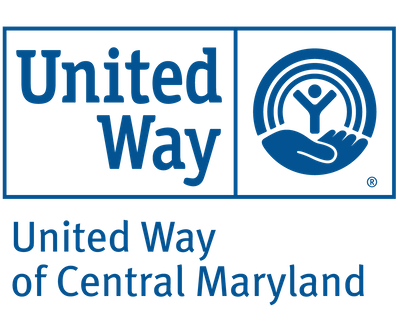Pandemic Impact: Almost 900,000 Maryland Households Financially Insecure

New ALICE Report shows pandemic aid temporarily blunted the financial crisis, but warning signs are on the horizon.
United Ways of Maryland is collecting audio testimonials from ALICE individuals about the difficult financial choices they continue to face today given the high cost of essentials and ongoing inflation. Voice messages can be recorded at: ALICEvoices.org.
Baltimore, MD (April 26, 2023) — The number of Maryland households unable to afford the basics grew by more than 70,000 during the first two years of the COVID-19 pandemic. A total of 899,798 households, or 38 percent of Marylanders, struggled to afford the basics as of 2021, according to a new report from United Ways of Maryland and its research partner, United For ALICE.
Reports have shown that both poverty levels and households defined as ALICE (Asset Limited, Income Constrained, Employed) have grown. That calculation includes the 245,077 households in poverty as well as another 654,721 ALICE families, who earn above the Federal Poverty Level but less than what’s needed to survive in today’s economy. ALICE families have been overlooked and undercounted by traditional poverty measures. ALICE represents the nation’s childcare workers, home health aides, cashiers, and more – those working low-wage jobs, with little or no savings and one emergency away from poverty, who were heralded for keeping the economy going during the pandemic.
ALICE in the Crosscurrents: COVID and Financial Hardship in Maryland shows that the total number of financially insecure households rose by 8 percent between 2019 and 2021 – more than the 6 percent increase in the state’s total number of households. The number of ALICE households increased by 24,592 during that time. In contrast, there were 45,731 more households in poverty.
Though Maryland ranked 15th in financial hardship among all 50 states, there are far too many people struggling to make ends meet. In Baltimore City, 53 percent of households were below the ALICE Threshold in 2021. In Baltimore County, the numbers were slightly better at 44 percent. In Anne Arundel County, 30 percent of households lived below the ALICE threshold; in Carroll County, 32 percent; Harford County, 37 percent; and Howard County, 24 percent.
While job disruptions and inflation delivered significant financial pain, a combination of pandemic supports and rising wages did help to blunt what could have been a deeper financial crisis, the report finds. However, as some benefits are peeled back, and inflation persists, signs of greater financial stress are on the horizon.
“It could have been so much worse for those whose struggle to feed themselves and their families, pay their rent, afford health care and other basics was often hidden in plain sight until the pandemic,” said Franklyn Baker, president and CEO, United Way of Central Maryland. “Equipped with the ALICE name and data, we can do even better to develop effective programs, services, and policies and track our progress toward reducing financial hardship in Maryland. We have an opportunity to build on what was learned during the pandemic as ALICE continues to face economic uncertainty.”
A big part of the problem is a mismatch between wages and the cost of basics. According to the report, for a family of four with an infant and a preschooler, the annual ALICE Household Survival Budget, which is the basic income needed to live and work in Maryland, was $97,056 in 2021. The Child Tax Credit and Child Dependent Care Tax Credit helped to soften the blow, bringing the family Survival Budget down to $81,948.
Even with the variety of temporary pandemic supports available, in 2021, a family of four with two-full time workers earning salaries as a retail salesperson and a cashier – two of the most common occupations in Maryland – fell short of affording the family budget by nearly $20,000.
“A positive change during the pandemic was that tax credits, stimulus payments and rental assistance were available for ALICE households and provided strong relief,” said Stephanie Hoopes, Ph.D., United For ALICE National Director. “However, as many of these supports come to an end, growing food insufficiency and other indicators reveal continued stress. Ignoring these warning signs places ALICE, our economy and the well-being of our communities at great risk.”
Additional report insights include:
- Racial disparities persist in the rates of financial hardship; 49 percent of Black and 44 percent of Hispanic households were below the ALICE Threshold in 2021, compared to 32 percent of white households.
- Senior and young households had among the highest rates of hardship. Nearly three quarters – 73 percent – of Maryland’s households headed by someone under age 25 as well as 47 percent of senior households could not afford basics in 2021.
- In 2021, 55 percent of the 20 most common jobs in Maryland paid less than $20 per hour. As a result, many of these top jobs still had a substantial percentage of workers who were either ALICE or in poverty in 2021.
- While emergency savings rates were increasing on average in Maryland, rates differed by income. In Federal Reserve surveys, only 32 percent of households below the ALICE Threshold had emergency savings or rainy day funds in October 2019 compared to 66 percent of households who were financially stable. By November 2021, the rate for households below the Threshold had increased to 53 percent, and the rate for households above had increased to 76 percent.
The ALICE Report for Maryland was sponsored by Kaiser Permanente, Ascension Saint Agnes Foundation, Ausherman Family Foundation, BEACON, Community Foundation of the Eastern Shore, Delaplaine Foundation, Inc., Leidos Biomedical Research, Inc., and Turning Point Financial. It is a project of United For ALICE, a grassroots movement of local United Ways, corporations, nonprofits and foundations in 27 states and the District of Columbia, all using the same methodology to document financial need. ALICE Reports provide county-by-county and town-level data, and analysis of how many households are struggling, including the obstacles ALICE households face on the road to financial independence.
To read the report and access online, interactive dashboards that provide data on financial hardship at the state, county and local level, visit UnitedForALICE.org/Maryland.
###
About United Way of Central Maryland
United Way of Central Maryland helps the working poor and those in poverty access basic needs like housing, healthcare, jobs, and education. The nonprofit’s programs promote equity, create opportunity, and improve the lives of our neighbors and the neighborhoods they call home. For nearly 100 years, United Way has tackled the toughest challenges in Baltimore City and Anne Arundel, Baltimore, Carroll, Harford, and Howard counties. Learn more at uwcm.org.
About United For ALICE
United For ALICE is a driver of innovation, research and action to improve life across the country for ALICE (Asset Limited, Income Constrained, Employed) and for all. Through the development of the ALICE measurements, a comprehensive, unbiased picture of financial hardship has emerged. Harnessing this data and research on the mismatch between low-paying jobs and the cost of survival, ALICE partners convene, advocate and collaborate on solutions that promote financial stability at local, state and national levels. This grassroots ALICE movement, led by United Way of Northern New Jersey, has spread to 27 states and includes United Ways, corporations, nonprofits and foundations in Arkansas, Connecticut, Delaware, Florida, Georgia, Hawai‘i, Idaho, Illinois, Indiana, Iowa, Kansas, Louisiana, Maine, Maryland, Michigan, Mississippi, New Jersey, New York, Ohio, Oregon, Pennsylvania, Tennessee, Texas, Virginia, Washington, Washington, D.C., West Virginia and Wisconsin; we are United For ALICE. For more information, visit: UnitedForALICE.org.
